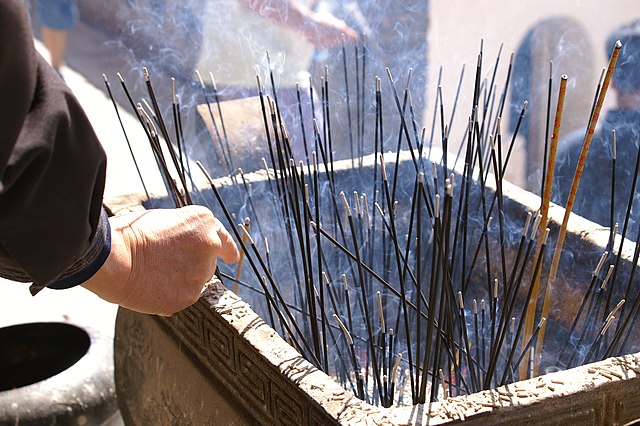Incense in China is traditionally used in a wide range of Chinese cultural activities including religious ceremonies, ancestor veneration, traditional medicine, and in daily life. Known as xiang, incense was used by the Chinese cultures starting from Neolithic times with it coming to greater prominence starting from the Xia, Shang, and Zhou dynasties.
Lidded hill censer (xianglu) with geometric decoration and narrative scenes. Han dynasty, 2nd century BCE
An Eastern Han ceramic hill censer
Bronze incense censer in front of Buddhist temple, Xi'an
Burning incense at a Chinese temple
The incense clock is a timekeeping device that originated from China during the Song Dynasty (960–1279) and spread to neighboring East Asian countries such as Japan and Korea. The clocks' bodies are effectively specialized censers that hold incense sticks or powdered incense that have been manufactured and calibrated to a known rate of combustion, used to measure minutes, hours, or days. The clock may also contain bells and gongs which act as strikers. Although the water clock and astronomical clock were known in China, incense clocks were commonly used at homes and temples in dynastic times.
A replica of an ancient Chinese stick incense clock





